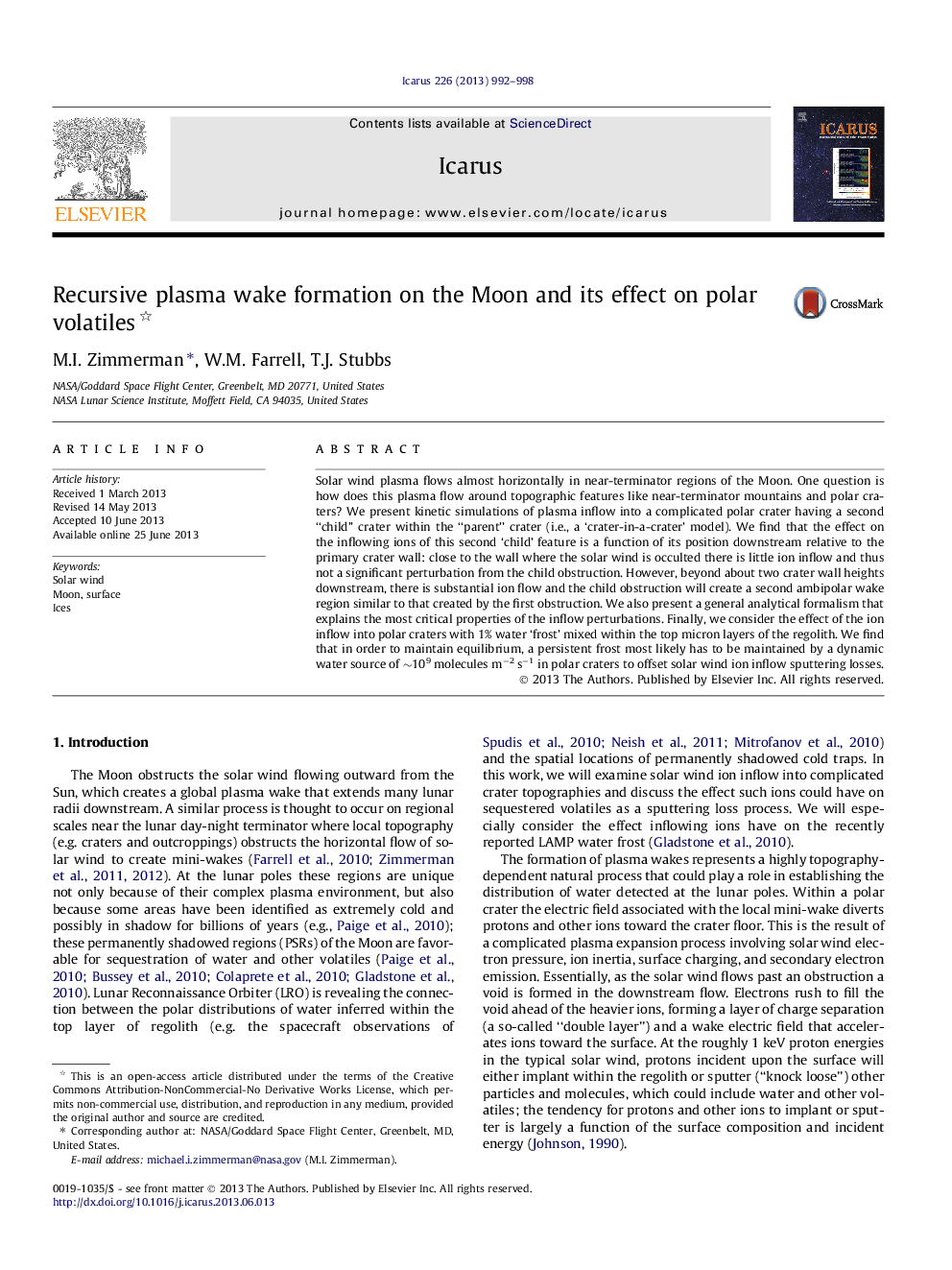| Article ID | Journal | Published Year | Pages | File Type |
|---|---|---|---|---|
| 10701356 | Icarus | 2013 | 7 Pages |
Abstract
Solar wind plasma flows almost horizontally in near-terminator regions of the Moon. One question is how does this plasma flow around topographic features like near-terminator mountains and polar craters? We present kinetic simulations of plasma inflow into a complicated polar crater having a second “child” crater within the “parent” crater (i.e., a 'crater-in-a-crater' model). We find that the effect on the inflowing ions of this second 'child' feature is a function of its position downstream relative to the primary crater wall: close to the wall where the solar wind is occulted there is little ion inflow and thus not a significant perturbation from the child obstruction. However, beyond about two crater wall heights downstream, there is substantial ion flow and the child obstruction will create a second ambipolar wake region similar to that created by the first obstruction. We also present a general analytical formalism that explains the most critical properties of the inflow perturbations. Finally, we consider the effect of the ion inflow into polar craters with 1% water 'frost' mixed within the top micron layers of the regolith. We find that in order to maintain equilibrium, a persistent frost most likely has to be maintained by a dynamic water source of â¼109Â molecules mâ2Â sâ1 in polar craters to offset solar wind ion inflow sputtering losses.
Keywords
Related Topics
Physical Sciences and Engineering
Earth and Planetary Sciences
Space and Planetary Science
Authors
M.I. Zimmerman, W.M. Farrell, T.J. Stubbs,
